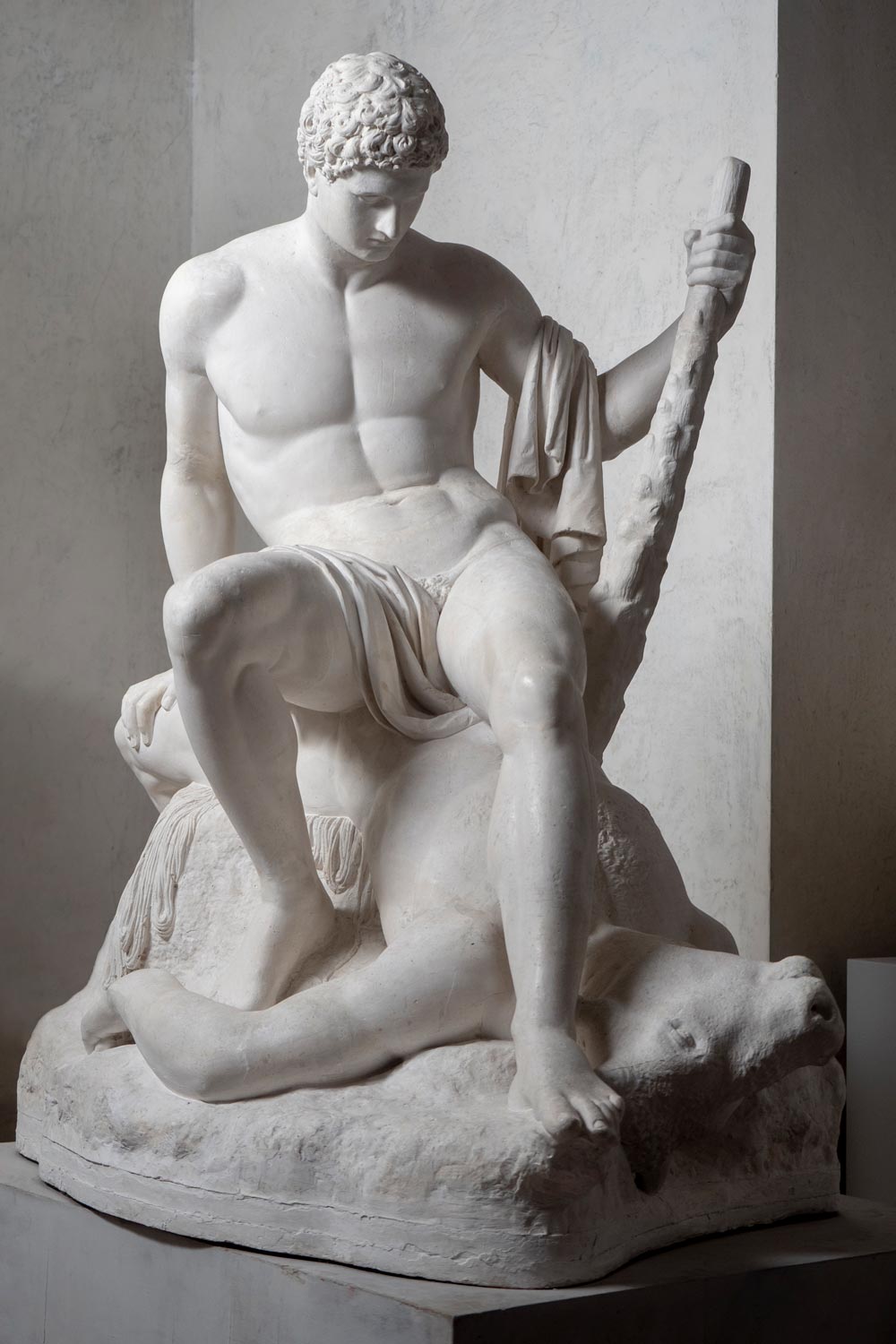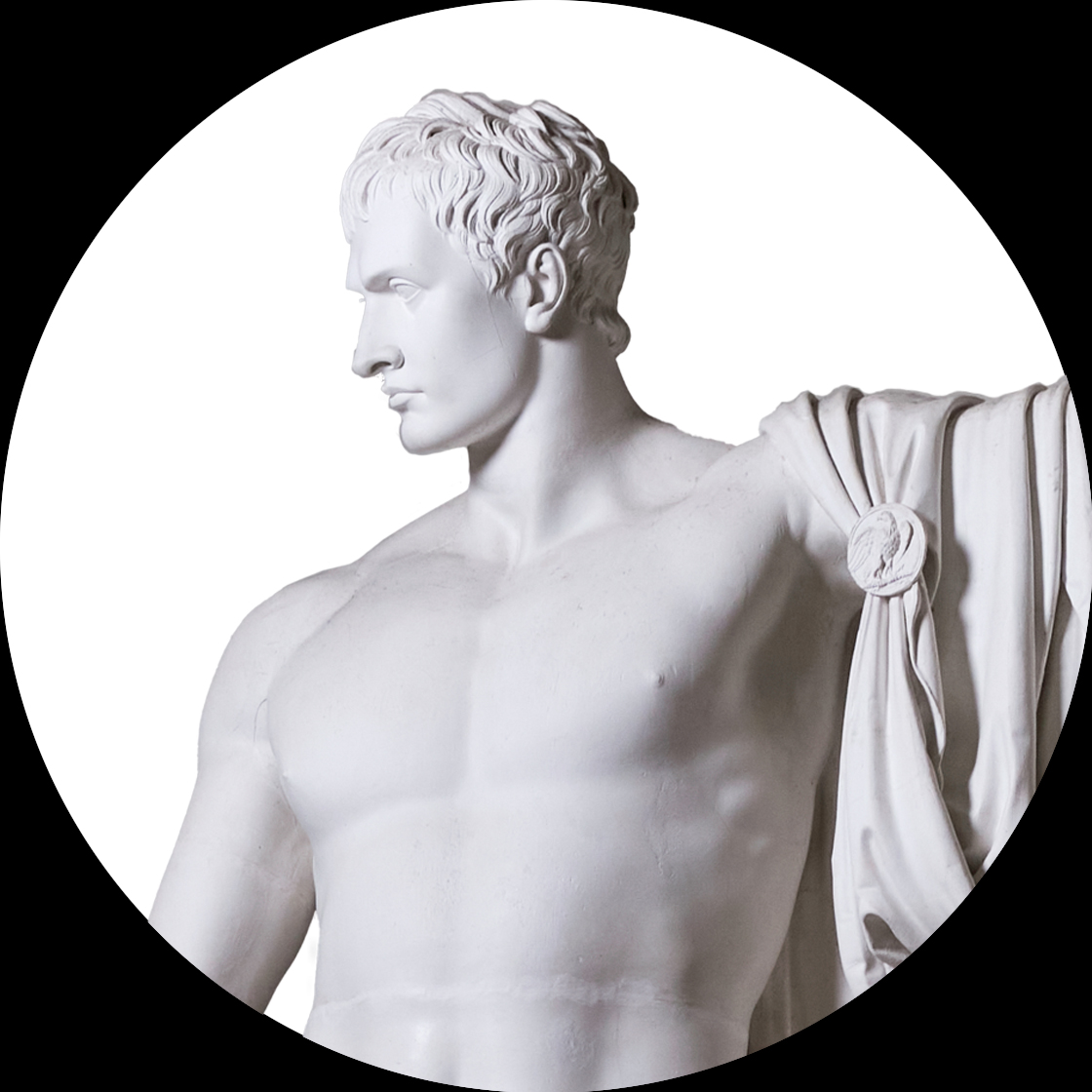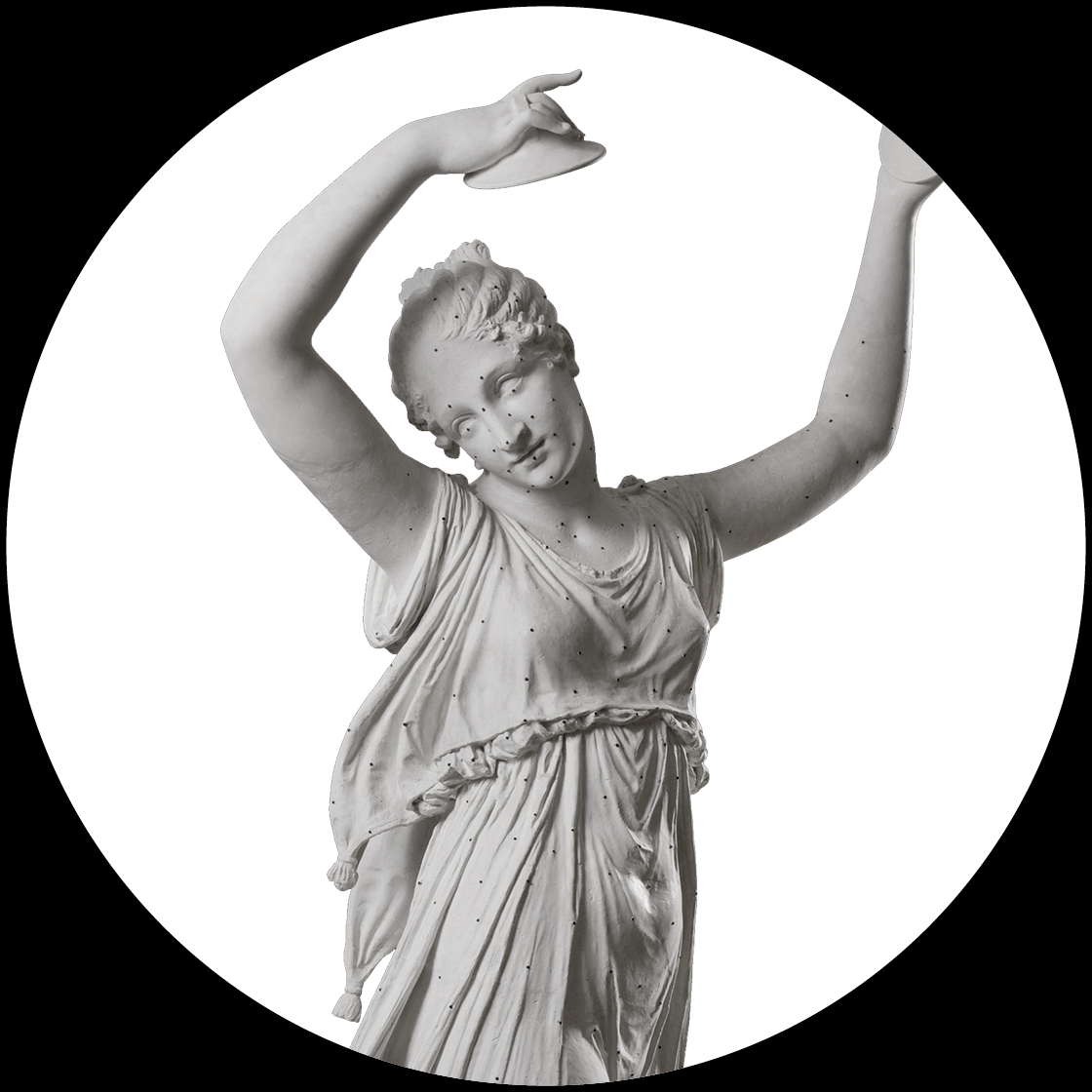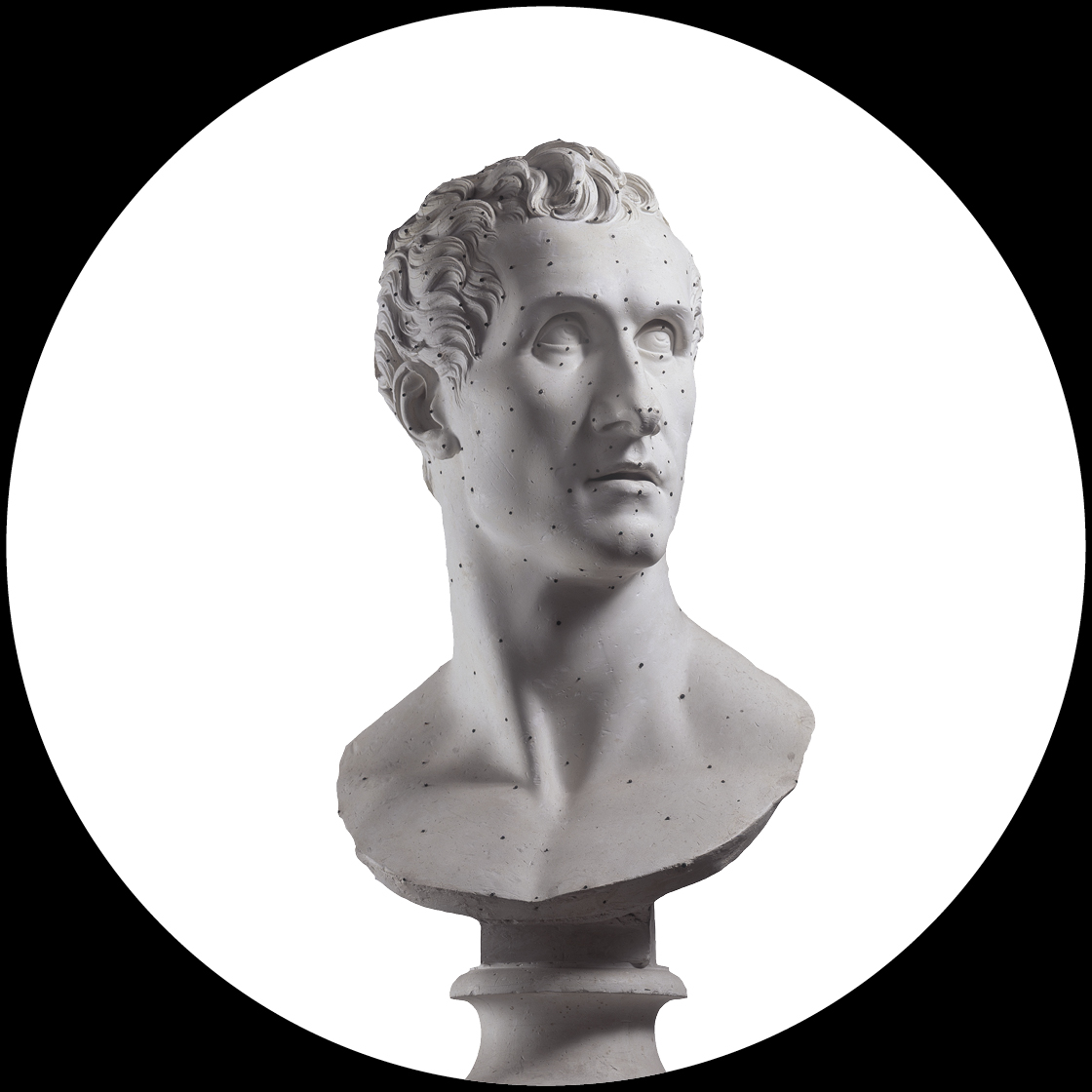Antonio Canova
Theseus and the Minotaur
1781
Plaster
Location
Gypsotheca, Nineteenth century wing
Theseus is sitting on the minotaur in a triumphant act, he is holding the club that helped him put the beast down. The minotaur is laying, in an unnatural pose, exsanguinated, with a human body and the head of a torus. This was the first piece where Canova associated the study of nature with his observations on classic art pieces he elaborated in Rome. This sculpture represents a major breakthrough for sculpting not only Canovian art but Italian art too. The change, that can be seen in this piece, consists in the synthesis of the beauty of nature with the ideal beauty. If you compare this artwork with Dedalo and Icarus, one of the last of his Venetian period, you can really see the difference between the two “eras”. In Dedalo and Icarus you can see a remarkable expressive flair, while in Theseus you notice a “peaceful appearance, worthy of a noble hero that is content with is victory, the Minotaur, while in contrast with Dedalo’s figure is in harmony with the rest of the art piece”. The marble version was executed between 1781 and 1783 in Rome, after it was commissioned by Venetian Ambassador Girolamo Zulian. Since 1962, the sculpture can be found at the Victoria and Albert Museum in London.
● Inventory Number
4
● Dimensions
150x160x95 cm
● Ownership
Fondazione Canova onlus, Possagno (TV)
● Marble
Victoria and Albert Museum, London (UK)
● Other plaster version
National Museum of Warsaw, Warsaw (PL)






